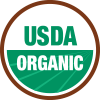

Cauliflower (Brassica oleracea var. botrytis), a member of the mustard family (Brassicaceae), is related to broccoli, brussels sprouts, cabbage, collard greens and kale. These annual, cool-weather plants grow about 1.5 feet tall and have large leaves enclosing an edible, firm cluster of immature flower buds, referred to as the head. The broad leaves enclosing the head shade it and prevent discoloration. The most common cauliflower variety has a white head, but there are also green, purple, and yellow varieties. The word "cauliflower" originated from the Latin words caulis (cabbage) and flōs (flower).
Low in fat and a good source of fiber, cauliflower provides protein and is a good source of vitamin C and K, choline and potassium, and also contains vitamin B6, thiamin, riboflavin, niacin, folate, pantothenic acid, magnesium, phosphorus, manganese, calcium, iron and zinc. It is a good source of phytochemicals like beta-carotene, alpha-carotene, cryptoxanthin, zeaxanthin, quercetin, lutein, rutin, kaempferol, caffeic acid, cinnamic acid and ferulic acid. Similar to other cruciferous vegetables, cauliflower is particularly high in glucosinolates (sulfur-containing compounds) and its breakdown derivatives Indole-3-carbinol, sulforaphane and isothiocyanates.*



| Product | Specifications | Extraction/Drying Method | Applications |
|---|---|---|---|
Cauliflower Powder (organic) | Country of Origin: China Part used: Head Appearance: White to dark beige powder Solubility: Partly soluble Certifications: Organic, Kosher and Food grade Produced in an FSSC 22000/BRC certified facility | Dehydrated |
Functional foods Dietary supplements Pet foods |